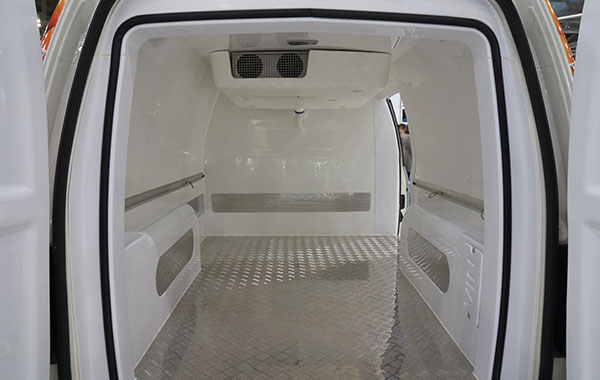How Are Refrigerated Trucks Cooled?

Understanding the Cold Chain Logistics
Refrigerated trucks, often referred to as "reefers," are a vital component in the transport of perishable goods, ensuring that products like food, medicine, and certain chemicals remain at the desired temperature during their journey. But have you ever wondered how these trucks manage to maintain such consistent temperatures? Let’s dive into the fascinating world of refrigerated transport and discover how these trucks stay so cool.
1. The Basics: Insulation
Before we even delve into the cooling systems, it's crucial to note that the truck's cargo area is heavily insulated. This insulation ensures that once the desired temperature is achieved, it remains stable with minimal energy input. Walls, floors, and doors are all lined with materials that trap cold air and keep out the external heat.
2. The Refrigeration Unit
The most critical component of a refrigerated truck is its refrigeration unit. Here's a simplified breakdown of how it works:
- Compressor: The heart of the system, it compresses a refrigerant gas, causing it to heat up. This hot gas then flows to the condenser.
- Condenser: Positioned usually at the front of the trailer, the condenser expels the heat from the hot gas, turning it into a high-pressure liquid.
- Expansion Valve: This valve then takes the high-pressure liquid and drops its pressure, causing it to cool significantly.
- Evaporator: This cooled refrigerant then enters the evaporator. As air from the truck's cargo area is passed over the evaporator, the refrigerant absorbs the heat from this air, cooling it down. The refrigerant then returns to its gaseous state and heads back to the compressor, and the cycle continues.
3. Diesel-Powered Generators
While some refrigeration units are powered by the truck's main engine, many use separate diesel-powered generators. This ensures that even if the truck's engine is off, the refrigeration unit can keep running, maintaining the cargo's temperature.
4. Advanced Temperature Monitoring
Modern refrigerated trucks are equipped with advanced temperature monitoring systems. These systems not only display the current temperature but also record it. This data can be crucial for clients who need to ensure that their goods have been kept at a consistent temperature throughout their journey.
5. Dual Temperature Zones
Some sophisticated trucks have dual or even multiple temperature zones. This feature allows the transport of goods that require different temperature settings in the same truck. For instance, one section can be set for frozen goods, while another can maintain a slightly warmer temperature for fresh produce.
* * * * *
Refrigerated trucks are marvels of modern engineering, allowing for the safe and efficient transport of perishable goods over long distances. By combining traditional methods like insulation with advanced refrigeration technology and monitoring systems, these vehicles play an indispensable role in our global supply chain, ensuring products reach consumers in the best possible condition.
Whether it’s the food on our tables, the medicines in our cabinets, or the flowers in our vases, the importance of refrigerated transport in preserving the quality and safety of these products cannot be overstated.
